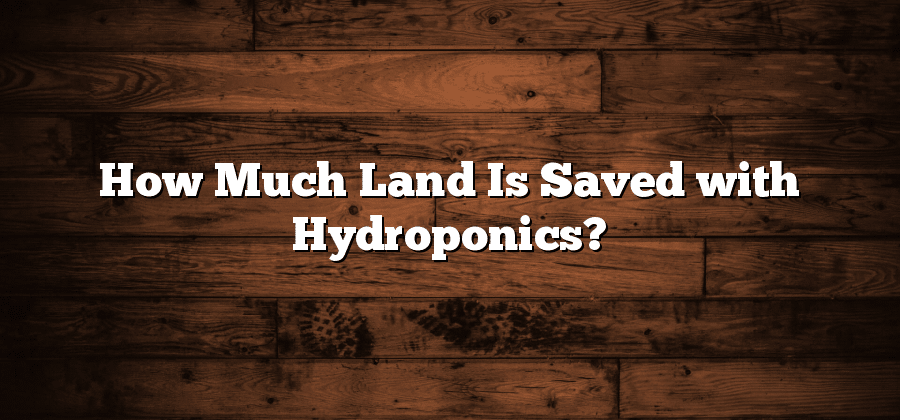Advantages of Hydroponics Over Traditional Agriculture
Hydroponics, a modern method of growing plants without soil, offers several advantages over traditional agriculture that make it a compelling alternative. Firstly, hydroponics allows for year-round cultivation of crops, irrespective of seasonal changes or adverse weather conditions. With controlled environments, plants can thrive in optimal conditions, resulting in higher yields and better quality produce.
Secondly, hydroponics eliminates the need for vast tracts of land typically required for traditional agriculture. By growing crops in nutrient-rich water solutions, this method drastically reduces the demand for arable land. As a result, land conservation efforts can be strengthened, preserving natural habitats and mitigating deforestation. Moreover, urban areas can benefit from hydroponics as it enables cultivation in smaller spaces, making it a viable solution for vertical farming and rooftop gardens.
These advantages position hydroponics as a promising and sustainable approach to food production. The controlled environments and minimal space requirements offer new opportunities for cultivating crops, addressing the challenges posed by traditional agriculture while supporting conservation and maximizing land use.
Benefits of Hydroponics in Land Conservation
Hydroponics, the cultivation of plants without soil, offers numerous benefits in the realm of land conservation. With traditional agriculture, vast expanses of land are required to grow crops, taking a toll on valuable natural resources and contributing to deforestation. However, hydroponics systems require significantly less land to produce the same amount of food, making them a more sustainable option. By utilizing vertical farming techniques, hydroponics enables crops to be grown in stacked layers, maximizing the use of available space and minimizing the need for expansive agricultural land. This allows for more efficient land use and helps to conserve natural habitats and ecosystems.
In addition to reducing the amount of land needed for cultivation, hydroponics also eliminates the need for pesticides and herbicides that are typically used in traditional farming methods. Without the use of soil, hydroponic plants are less susceptible to pests and diseases, reducing the dependence on harmful chemicals. This not only protects the environment from pollution but also ensures that the food produced through hydroponics is healthier and free from harmful residues. Furthermore, hydroponics systems can be designed to recycle water and nutrients, reducing water waste and preventing contamination of nearby water sources. By minimizing the environmental impact of agriculture, hydroponics contributes to overall land conservation efforts and promotes a more sustainable future.
The Environmental Impact of Hydroponics
As our world faces increasing environmental challenges, the need for sustainable and efficient agricultural practices has become more pressing than ever before. Hydroponics, a soilless cultivation method, offers numerous benefits in terms of environmental impact. Firstly, hydroponic systems use significantly less water compared to traditional agriculture, making it a more water-efficient option. This is because hydroponics allows for precise control and recycling of water, reducing wastage and mitigating the strain on freshwater resources. Additionally, since hydroponic systems are typically designed in a closed-loop manner, the risk of nutrient runoff and water pollution is minimized, ensuring a more eco-friendly approach to food production.
In terms of land utilization, hydroponics also offers several advantages. Unlike traditional agriculture, which requires large amounts of land for crop cultivation, hydroponics maximizes vertical space, allowing for multiple layers of crops to be grown in the same area. This vertical farming technique makes hydroponics especially suitable for urban environments where land is scarce. By utilizing space more efficiently, hydroponics can help minimize the need for further deforestation or land conversion, thus preserving natural habitats and biodiversity. Moreover, hydroponic systems can be implemented in various settings, including unused buildings or rooftops, repurposing existing infrastructure and minimizing the need for additional land use.
Maximizing Land Use with Hydroponics
Hydroponics, a soilless method of growing plants, offers a unique advantage in terms of maximizing land use. Unlike traditional agriculture, hydroponics systems can be set up in small spaces, utilizing vertical farming techniques and stacking multiple layers of plants. This allows farmers to make the most out of limited land availability and increase their overall crop yield.
By utilizing hydroponics, farmers can also grow crops year-round, regardless of the external climate. Traditional agriculture is often limited by seasonal changes and climate conditions, which can have a significant impact on crop productivity. However, with hydroponics, farmers have more control over the growing environment, including temperature, light, and humidity. This enables them to create optimal conditions for plant growth, resulting in higher yields and maximizing the use of their available land.
Efficiency and Productivity of Hydroponics Systems
Hydroponics systems have gained significant attention in recent years due to their impressive efficiency and productivity. The controlled environment provided by hydroponics allows for optimal growth conditions, resulting in faster growth rates and higher yields compared to traditional agriculture methods.
One of the key factors contributing to the efficiency of hydroponics systems is the ability to carefully monitor and control nutrient levels. In traditional soil-based agriculture, nutrients are often lost due to leaching or uneven distribution, which can lead to inefficient nutrient absorption by plants. On the other hand, hydroponic systems deliver precise nutrient solutions directly to the roots, ensuring that plants receive the necessary elements in the right amounts. This targeted approach not only maximizes nutrient uptake but also minimizes waste, making hydroponics a highly efficient method of plant cultivation.






